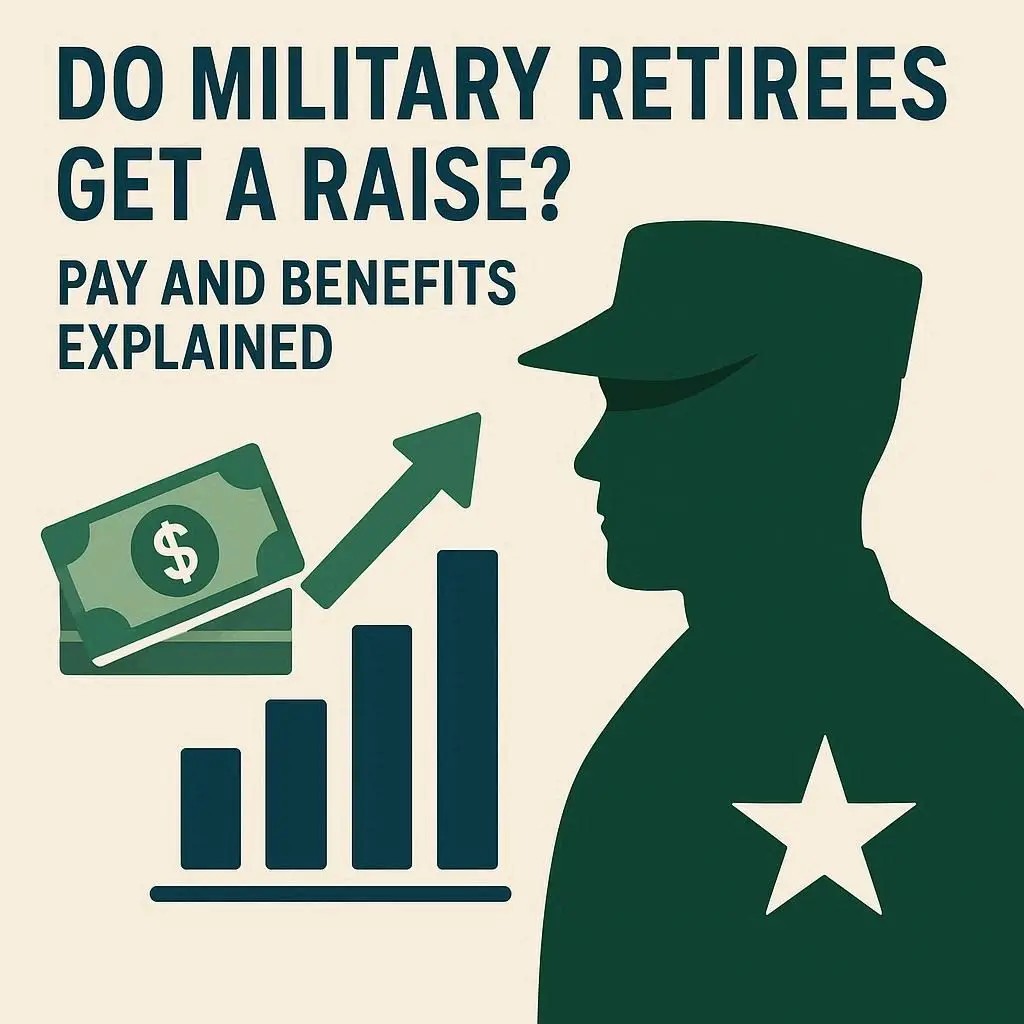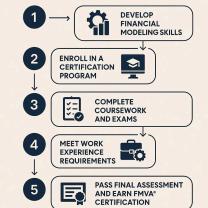Do military retirees get raise?
Do Military Retirees Get a Raise? Pay and Benefits Explained
Many military retirees wonder whether their retirement pay increases over time. Understanding military retirement pay and the potential for raises is essential for long-term financial planning.
Do Military Retirees Receive Raises?
Yes, most military retirees receive annual cost-of-living adjustments (COLA) to their retirement pay. These increases are designed to keep pace with inflation and maintain the purchasing power of their benefits.
How Military Retiree Pay Raises Work
Cost-of-Living Adjustments (COLA)
The Department of Defense adjusts retirement pay each year based on changes in the Consumer Price Index (CPI).
COLA ensures that retirees’ pay reflects the rising costs of goods and services.
Eligibility
Most retirees who receive retired pay from the military automatically qualify for COLA.
The adjustment typically applies to both regular retired pay and certain survivor benefits.
Other Pay Increases
While COLA is automatic, other pay raises (like promotion-based increases or special pay) generally do not apply to retirees.
However, retirees who continue to work in federal or defense-related jobs may be eligible for separate salary increases.
Military Retiree Benefits Beyond Pay
In addition to retirement pay, military retirees often enjoy a range of benefits, including:
Healthcare: Access to TRICARE for Life or other military health plans.
Veteran Benefits: VA disability compensation, education benefits, and home loan eligibility.
Commissary and Exchange Privileges: Discounts on groceries, goods, and services.
Survivor Benefits: Options to provide continued support to spouses or dependents.
Military retirees generally do receive raises through cost-of-living adjustments, helping protect their income against inflation. While these adjustments don’t apply to every type of pay, the combination of retirement pay and additional benefits ensures that retirees have financial support and stability after serving their country.
Military retirees do receive "raises" in their retirement pay, primarily through annual Cost-of-Living Adjustments (COLAs).
Here's a detailed look into military retiree pay:
Do Military Retirees Receive Raises?
Yes, military retirees generally receive annual increases in their retirement pay, known as Cost-of-Living Adjustments (COLAs).
The COLA percentage is determined by the increase in the Consumer Price Index for Urban Wage Earners and Clerical Workers (CPI-W), as measured by the Department of Labor.
Factors That Influence Retirement Pay Adjustments
Several factors influence a military retiree's monthly pay and its annual adjustments:
Retirement System/Plan: The date you entered military service (Date of Initial Entry into Military Service - DIEMS) determines which retirement system you fall under, each with its own COLA calculation rules:
Final Pay Plan (DIEMS before Sep 8, 1980): Retired pay is based on final basic pay, and COLAs typically match the full CPI increase.
High-36 Plan (DIEMS between Sep 8, 1980, and July 31, 1986, or chosen by those under REDUX): Retired pay is based on the average of the highest 36 months of basic pay, and COLAs generally match the full CPI increase.
REDUX Plan (DIEMS on or after Aug 1, 1986, with a Career Status Bonus election): Retirees under REDUX receive COLAs that are typically one percentage point less than the full CPI increase until age 62.
At age 62, a one-time adjustment "resets" the multiplier to what it would have been under the High-36 plan, and future COLAs revert to CPI minus 1%. Blended Retirement System (BRS) (DIEMS on or after Jan 1, 2018): BRS combines a reduced defined benefit (40% of highest 36 months of basic pay after 20 years) with a Thrift Savings Plan (TSP) contribution.
COLAs for BRS generally follow the full CPI increase.
Years of Service (YOS): The length of creditable service directly impacts the retirement multiplier (the percentage of your base pay you receive).
More years of service result in a higher percentage. Rank at Retirement: Your final basic pay or the average of your highest 36 months of basic pay is directly tied to your rank, which significantly influences the retirement pay calculation.
Date of Retirement: For the first COLA after retirement, a partial COLA may be applied if you retire between January 1st and September 30th.
This is designed to prevent retirees from receiving both a new pay raise and a full COLA in their initial retirement year. Retiring at the end of a fiscal quarter (e.g., March, June, December) can sometimes be more advantageous due to how COLA is calculated, though this can be complex. Congressional Action: While COLA is primarily tied to the CPI, Congress ultimately has the authority to pass legislation that affects military retirement pay, though changes to COLA formulas (like past proposals for "Chained CPI") are often met with significant opposition from veteran advocacy groups.
Inflation (CPI-W): As the primary driver of COLA, the Consumer Price Index directly dictates the percentage increase retirees receive.
Cost-of-Living Adjustments (COLA) for Retirees
Calculation: The COLA is determined by comparing the average third-quarter CPI-W of the current year to the average third-quarter CPI-W of the prior year.
Effective Date: COLAs are effective on December 1st of each year.
Payment Impact: Retirees see the COLA reflected in their pay at the end of December (for the December payment) or the beginning of January (for the January payment, depending on banking cycles).
Taxable: Military retirement income, including COLA increases, is subject to federal income tax.
State income tax laws vary, so state taxation of retirement pay and COLA depends on your state of residency. Other Benefits: Survivor Benefit Plan (SBP) annuities, VA disability compensation and pensions, and Social Security benefits are also adjusted using the same COLA that applies to military retirement pay.
Benefits and Allowances for Military Retirees
Beyond monthly retirement pay, military retirees are eligible for a wide array of benefits and allowances:
Healthcare (TRICARE): Access to TRICARE health care plans, including TRICARE Prime, TRICARE Select, and TRICARE for Life (for those 65 and older who are also enrolled in Medicare Part B).
Commissary and Exchange Privileges: Access to discounted groceries at commissaries and tax-free shopping at military exchanges.
Veterans Affairs (VA) Benefits:
Disability Compensation: Monthly payments for service-connected disabilities.
GI Bill and Education Benefits: Eligibility for education benefits (e.g., Post-9/11 GI Bill) which can be used by the veteran or transferred to eligible dependents.
VA-backed Home Loans: Access to VA-guaranteed home loans, often requiring no down payment.
Veterans Pension Program: Monthly payments for wartime veterans with limited income and net worth who meet age or disability requirements.
Life Insurance: Options for continued life insurance coverage (e.g., Veterans' Group Life Insurance - VGLI).
Burial and Memorial Benefits: Eligibility for burial in national cemeteries, headstones/markers, and funeral honors.
Support for Veteran-Owned Small Businesses: Resources and assistance for veterans starting or operating small businesses.
Survivor Benefit Plan (SBP): An optional program that allows a retiree to provide a continuous income stream to eligible survivors (spouse, children) after their death.
Thrift Savings Plan (TSP): For those in the BRS, a portable retirement savings and investment plan with government matching contributions.
Space-Available Travel: The possibility of flying on military aircraft on a space-available basis.
Morale, Welfare, and Recreation (MWR) Facilities: Access to on-base MWR facilities, including gyms, recreation centers, and discounted travel services.
Legal Assistance: Access to legal aid services provided by the military.
How to Stay Updated on Retirement Pay Changes
Staying informed about changes to your military retirement pay and benefits is crucial. Here are key resources:
Defense Finance and Accounting Service (DFAS): DFAS is the primary agency responsible for military pay.
myPay: Your online account with DFAS (mypay.dfas.mil) is the most important tool. You can view your Retiree Account Statement (RAS) annually, check monthly eRAS, update direct deposit information, manage allotments, and review tax information.
DFAS Retired Military Website: (militarypay.defense.gov/Pay/Retirement/) Provides official information on retirement pay, COLA, and news.
Look for their "news and events" or "newsletter" sections. Customer Service: You can call DFAS Retired Pay Customer Service for assistance (e.g., 800-321-1080).
Military.com / Military Times: These independent news outlets frequently publish articles and updates on military pay, benefits, and COLA announcements as soon as they are released.
Veteran Service Organizations (VSOs): Organizations like the Military Officers Association of America (MOAA), American Legion, and Veterans of Foreign Wars (VFW) actively advocate for military retirees and veterans. They often publish updates and analyses on pay changes and proposed legislation.
Department of Veterans Affairs (VA) Website: (www.va.gov) Provides comprehensive information on VA benefits.
Social Security Administration (SSA) Website: (www.ssa.gov/cola/) While focused on Social Security, the COLA announced by the SSA is the same one applied to military retirement pay.
Military OneSource: (www.militaryonesource.mil) Offers resources and guidance on military retirement and transition.
It's recommended to review your Retiree Account Statement (RAS) from myPay at least once a year, particularly in December, to verify the COLA application and ensure your account information is accurate.












